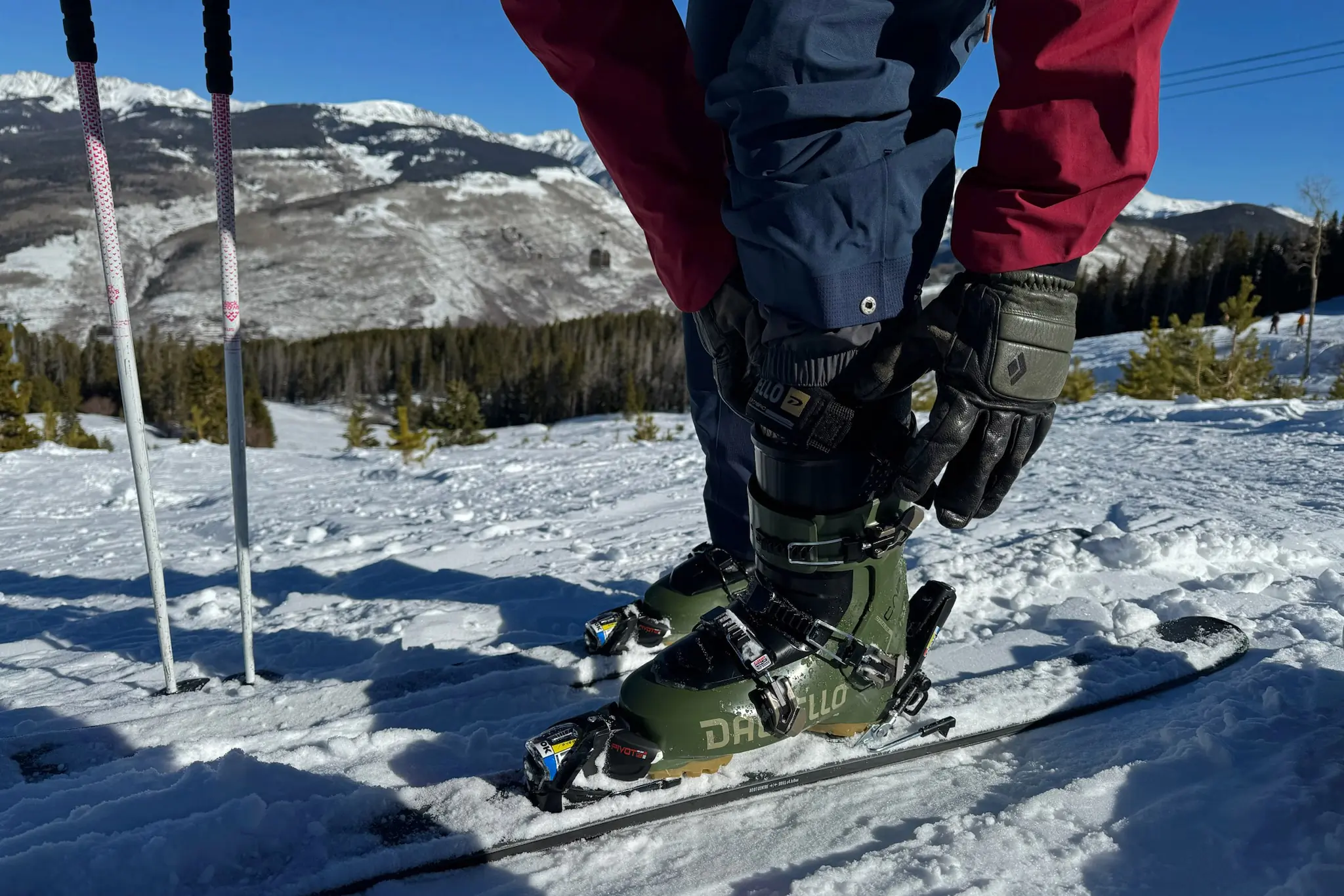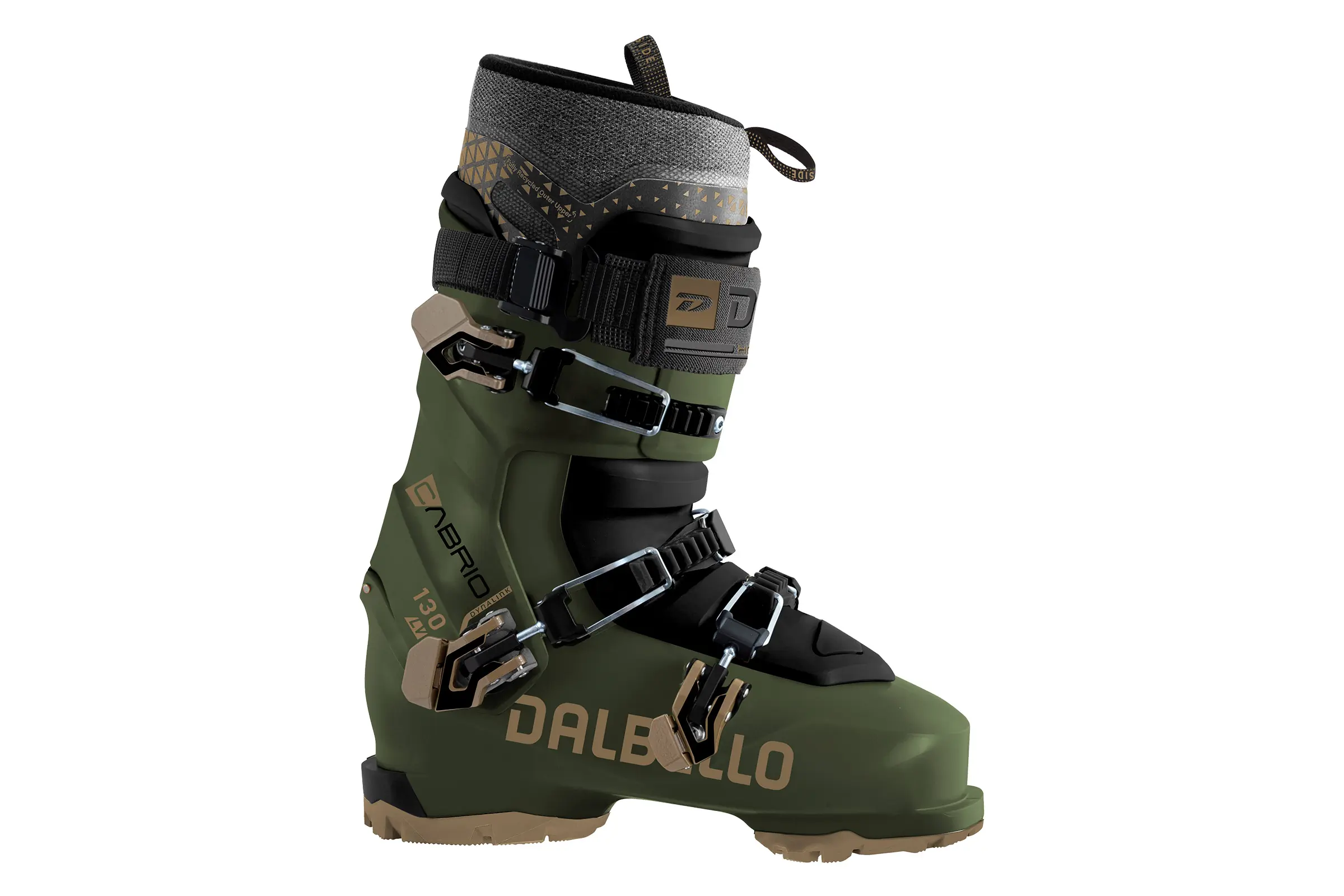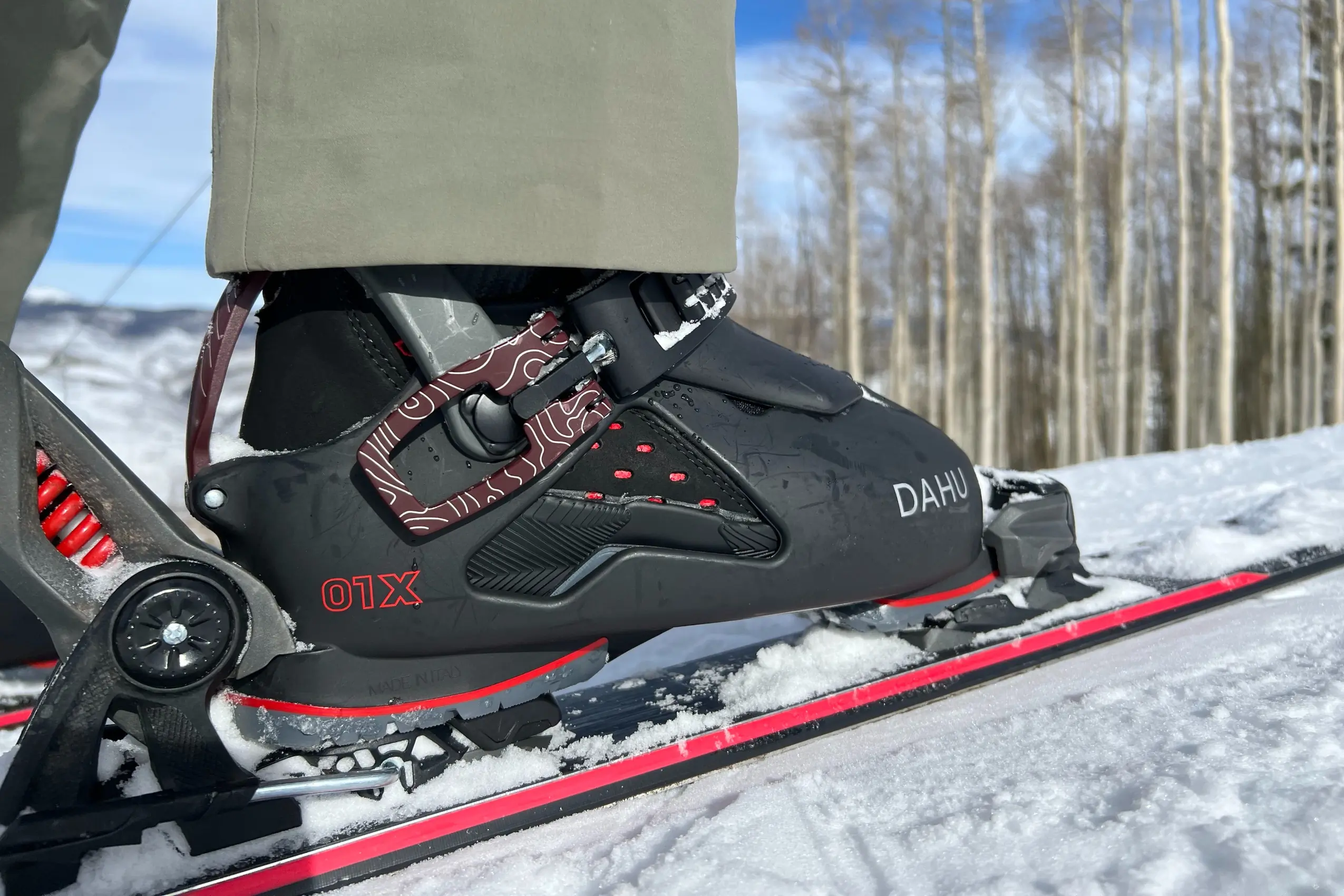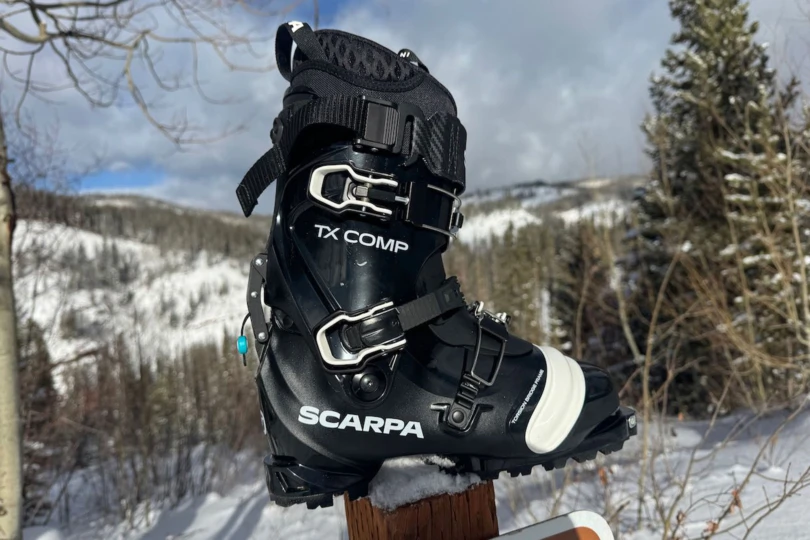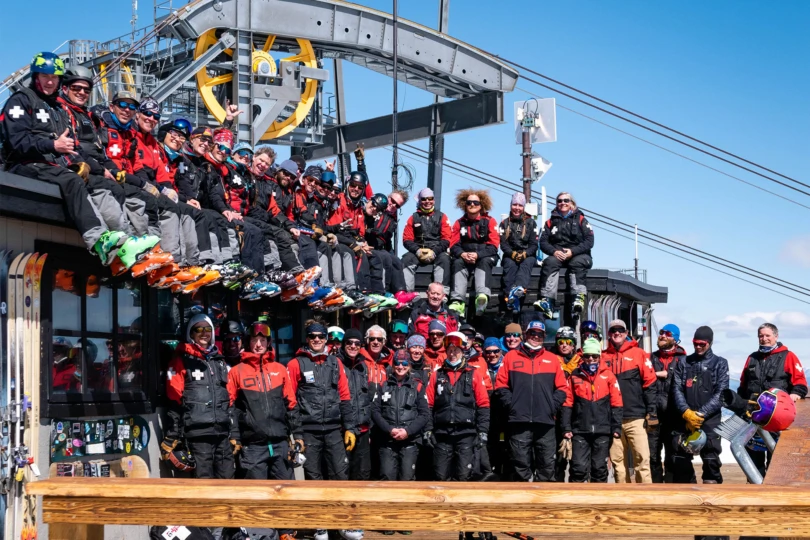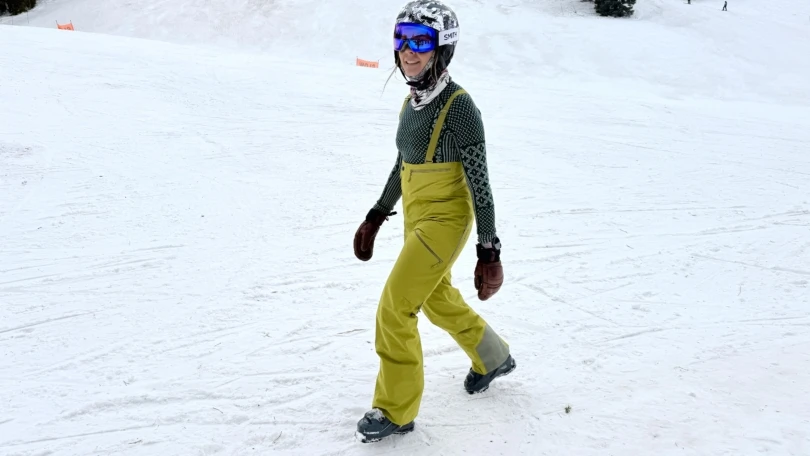Colorado has experienced the full spectrum of snow conditions this early season — both excellent and horrifying. There has been a day for every different ski in my arsenal and I’ve been attaching them to my body via Dalbello’s new Cabrio LV 130. The new three-piece freeride-oriented cabrio-style boot replaces the brand’s popular Krypton series.
Through the crud and chunder, I learned something about cabrio-style ski boots and the aptly named Cabrio LV — they turn harsh conditions into butter. I skied them hard, I skied them playfully, fast, slow, and at my limit. After all this testing, I’ve got a hunch that a large swath of skiers will dig these new cabrio crushers.
In short: Three-piece cabrio-style ski boots have enjoyed a cult following since Raichle launched the design in 1980. Dalbello’s new Cabrio LV 130 is the flagship of its new Cabrio line built for freeriders that will appeal to a wide variety of skiers. These boots had me hooked with their ease of entry. But the buttery smooth ride, responsive and energetic character, and all-day comfort have kept me smiling all day at the resort through both atrocious and supreme conditions alike.
If you’re shopping for boots, compare the Dalbello Cabrio LV 1390 to GearJunkie’s full list of the Best Ski Boots.
- Sizes: 24.5, 25.5, 26.5, 27.5, 28.5, 29.5, 30.5
- Ski boot weight: 1,950 g (Size 26.5)
- Construction: 3-piece cabrio
- Materials: Pebax tongue, polyurethane cuff and shell
- Flex: 130
- Last: 99 mm
- Liner: 3DensityWrap Max
- Strap: POWER BAND 50 mm
- Category: Freeride, freestyle
- Sole type: Gripwalk (ISO 23223) or Alpine (ISO 5355)
Pros
- Easy entry/exit
- Smooth, engaging flex character
- Excellent impact absorption
- Powerful enough for any ski
Cons
- Instep buckle is difficult to lock
- Flex not as progressive as stiff overlap boots
Dalbello Cabrio LV 130 Ski Boots: Review
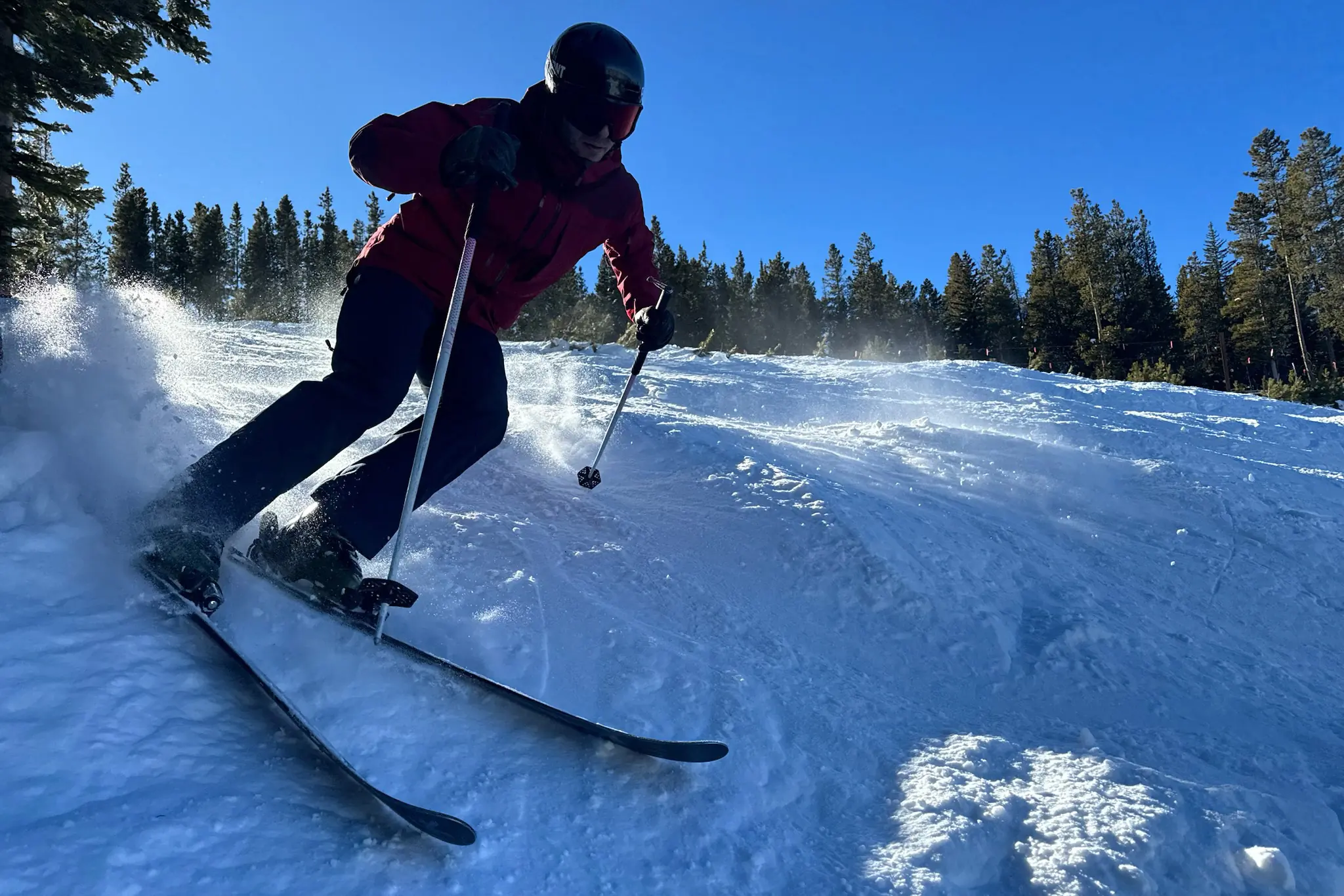
Skiing Performance: Dalbello Cabrio LV 130s
It’s been a while since I’ve skied another cabrio-style boot. And that’s a shame because my first few days on the Cabrios were blissful. I threw them at every conceivable snow condition with my full arsenal of skis — powder, hardpack, breakable crust, hard chunk, and every variation in between. The Cabrios softened all of it.
After searching through a thesaurus, “smooth” is the best word to describe how these boots perform. They absorb impacts and they make hard snow feel friendlier. They even take the edge off hard chop — which, in my stiff overlap boots, can feel like getting kicked in the shin over and over again.
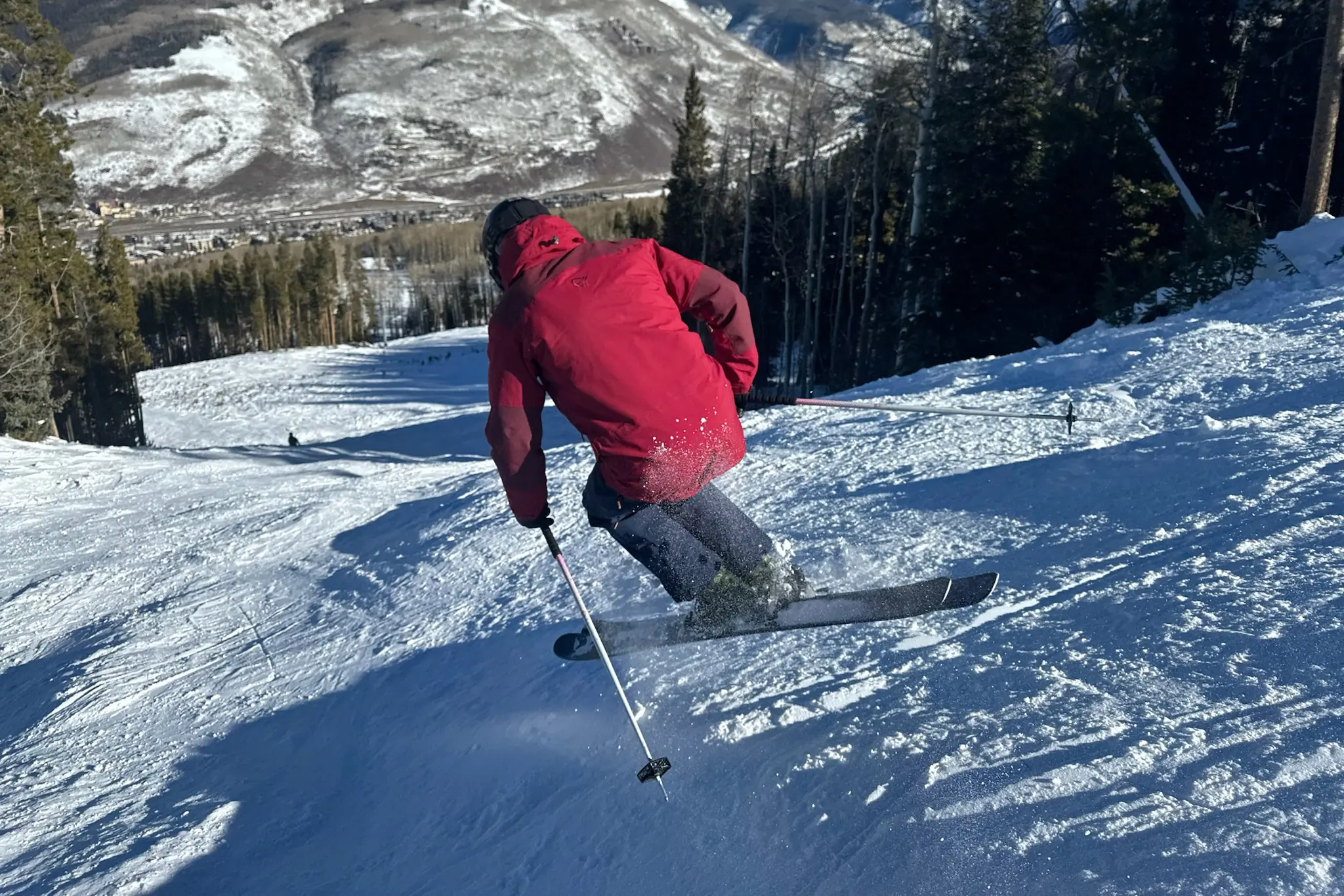



Powder felt like freedom. The boots felt active without me needing to push all my weight into my tongues. I could just ski freely as the terrain and snow conditions required, and the boots would transfer the energy. They were powerful enough to drive even my most unwieldy powder skis but supple enough for slow-speed fun.
Hard snow conditions took on a new character with the Cabrios. Jumping, jibbing, and exploring felt more fun and less chattery. My shins didn’t die, and the boots stayed lively even when I wasn’t driving particularly hard. Their composure through such opposite snow conditions has a lot to do with how they’re built
Build and Flex
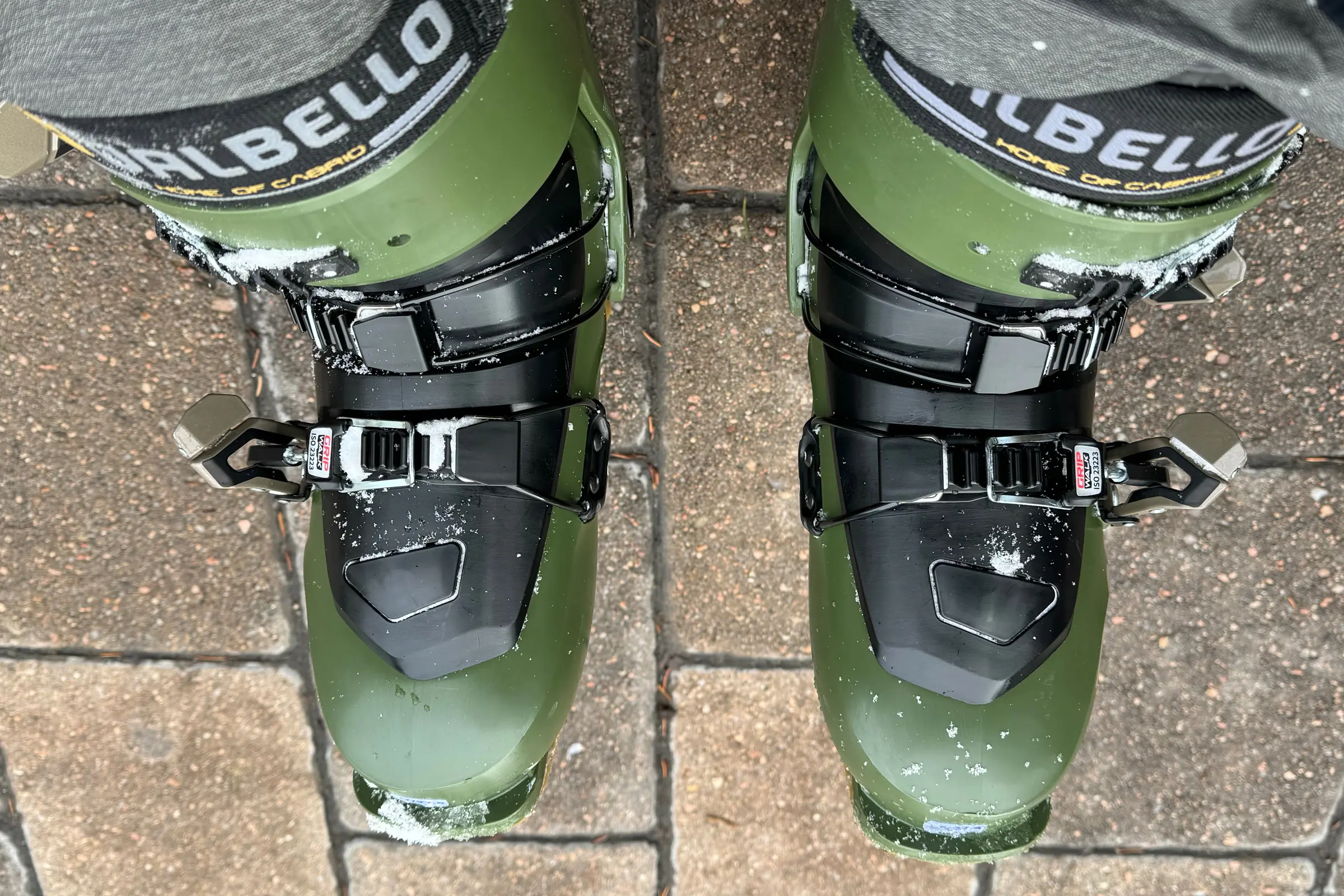



Cabrio boots are made of three shell segments — the lower shell, the cuff, and the tongue.
The tongue is the anomaly here compared to traditional overlap boots like many of those on GearJunkie’s Best Ski Boots. The buckles push the tongues down over your foot instead of pulling the shell segments together laterally. It makes cabrio boots feel more engaged right off the top. That’s because the tongue is pressing against your shin, foot, and ankle at all times. There’s no dead space.
Finding the Power
In traditional overlap boots, the spine is where a boot’s power comes from (when you’re leaning into the flex, the spine is resisting). Cabrio-style boots like these flip the script. Instead, the tongue provides the power and resists the flex.
On top of that, the Cabrio’s main pivot sits lower on the shell than a traditional overlap boot, providing more leverage for the skier to flex the boot. It was immediately noticeable once I picked up some speed and leaned into them. Right off the top, the boot felt more engaging, forgiving, and active.
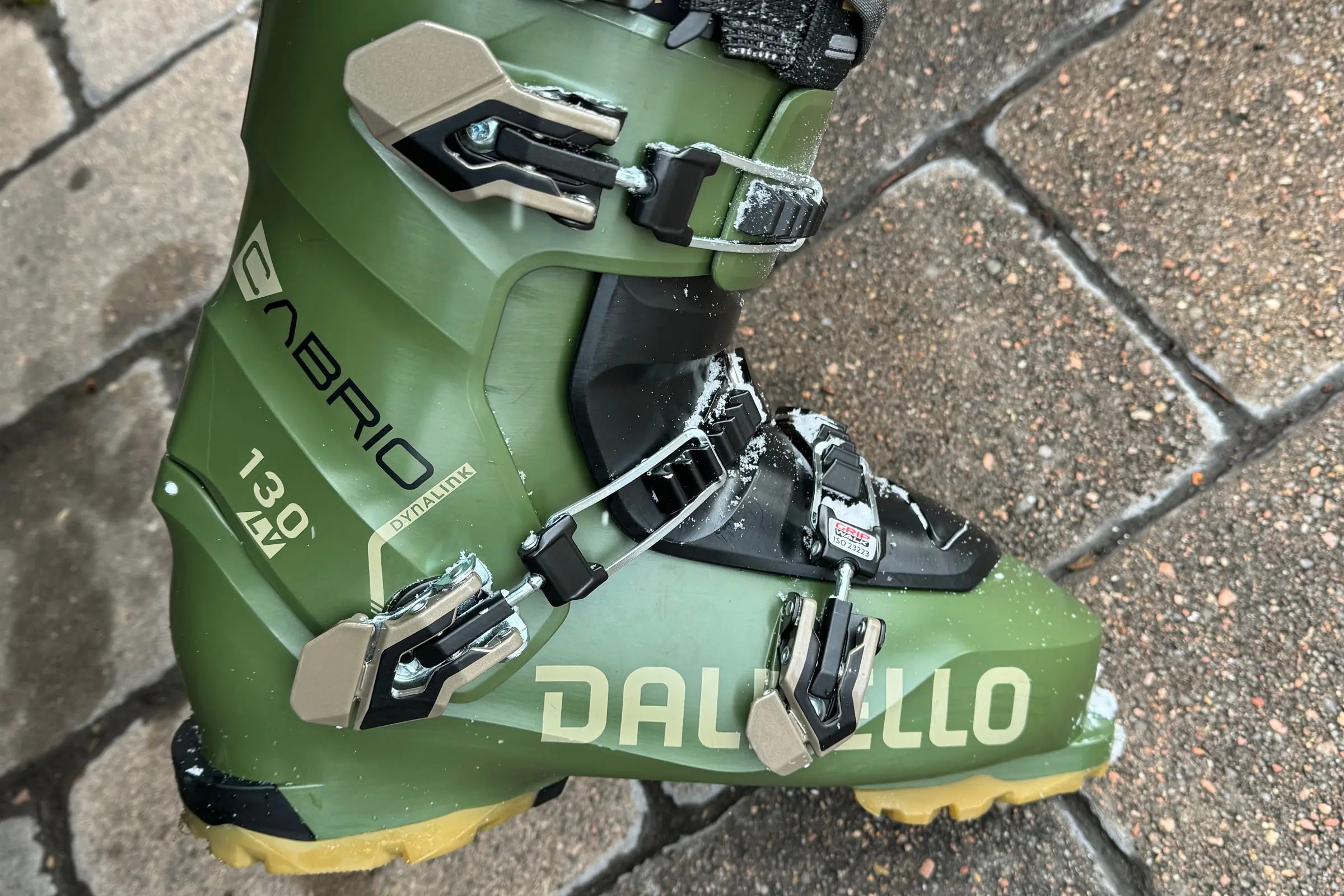



Flex & Engagement
The Cabrio LVs trade the slightest amount of precision in exchange for the active and forgiving flex, which I only noticed in very hard conditions. I think the minimal tradeoff is worth it, though, and I think the vast majority of skiers will agree.
I don’t want to imply that the Cabrios are squishy — they’re not — but I’m running out of adjectives. Rather than “soft,” their flex felt more linear than an overlap boot. It takes less effort to engage them high up in the flex range. They also seem to have more bounceback and quicker rebound higher up in the flex, thus a more active and energetic character.
Support
These Cabrios are quite supportive throughout, but they don’t have that all-out powerful ramp-up deep into the flex when you’re pushing the limit in chunky conditions or carving deep arcs as powerful overlap boots do. It’s one of the reasons that you don’t see any World Cup ski racers skiing cabrio-style boots.
You do, however, see most top mogul skiers and lots of freestylers sporting cabrio-style boots, and they’re going plenty fast and landing hard. They run cabrio-style boots for better impact absorption and rebound characteristics.
Dalbello’s completely new Cabrio collection offers both men’s and women’s lines in three different flex ratings each — 130, 120, and 100 for men and 115, 95, and 85 for women. There’s also a new parallel line, the Cabrio FREE, which incorporates tech binding compatibility and ski/walk levers for touring.
Ease of Entry
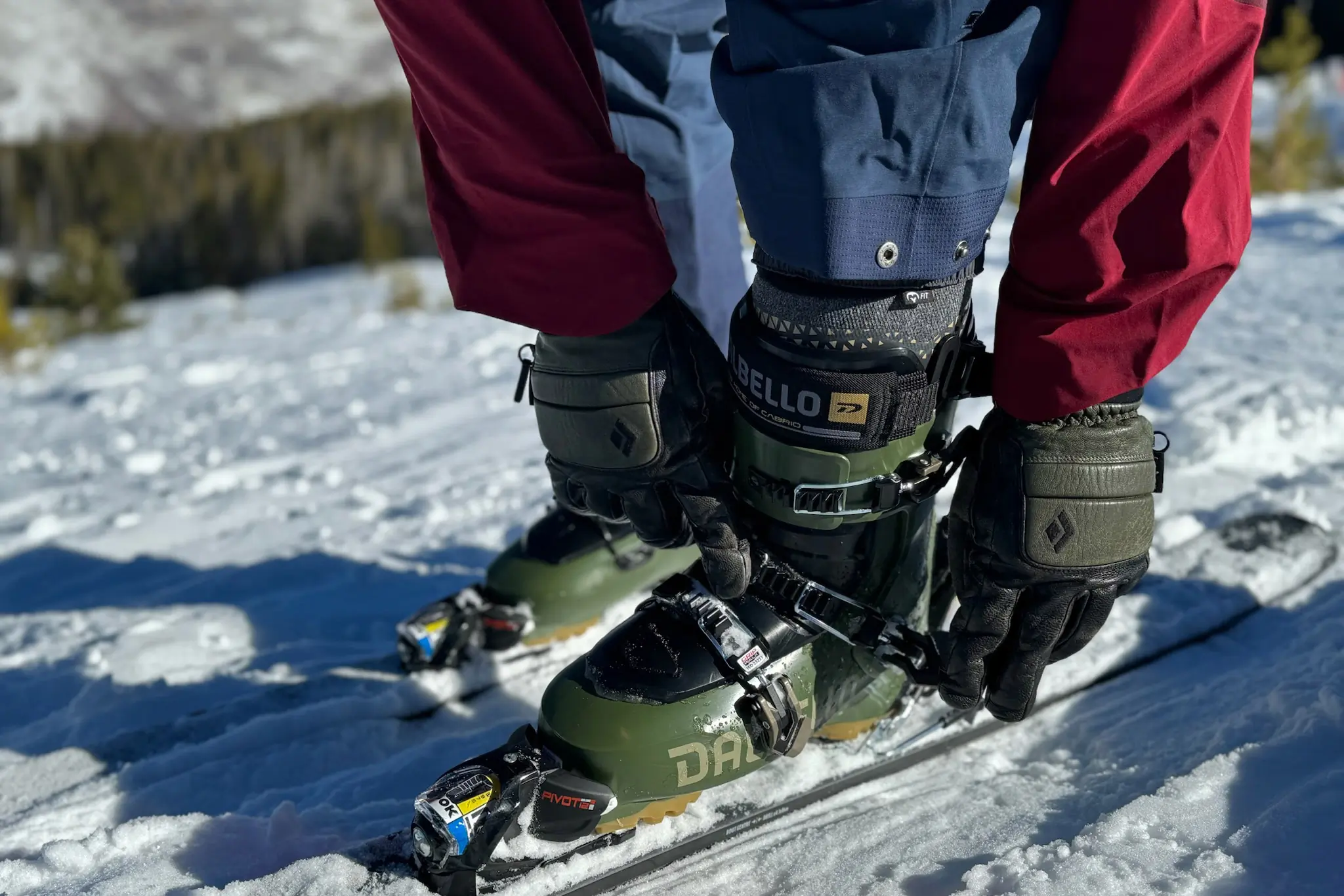



Easy On, Easy Off
Getting in and out of these boots, and Cabrio-styled boots in general could be the biggest plus for the average skier. The hard Pebax tongue hinges open from the toe and folds up and out of the way. It exposes the liner’s opening length from cuff to toe. Dropping your foot in and pulling it out is blissfully easy.
I’m so impressed, in fact, that I’m trying to convince my dad to upgrade to these boots for that purpose alone; to ease the agony of stuffing a previously broken ankle into a ski boot. The days of prying open overlap boots, leaving them in front of the heater, and dreading pulling them off are over.
PuRE 3D Wrap Liner
Other than the ease of entry, hands down my favorite feature on this boot is the 3D wrap liner that completely engulfs your foot. It’s luxuriously large and cradles your foot more snugly than a typical boot liner. It’s designed with Dalbello’s PuRE (Polyurethane Recycled Enforcement) technology that Dalbello claims offers particularly efficient force transmission to the shell.
I’ll buy it. But it was difficult to tease apart the power transmission components from the overall package. The whole boot transfers power from foot to ski well, and the great fitting liner is the foundation.
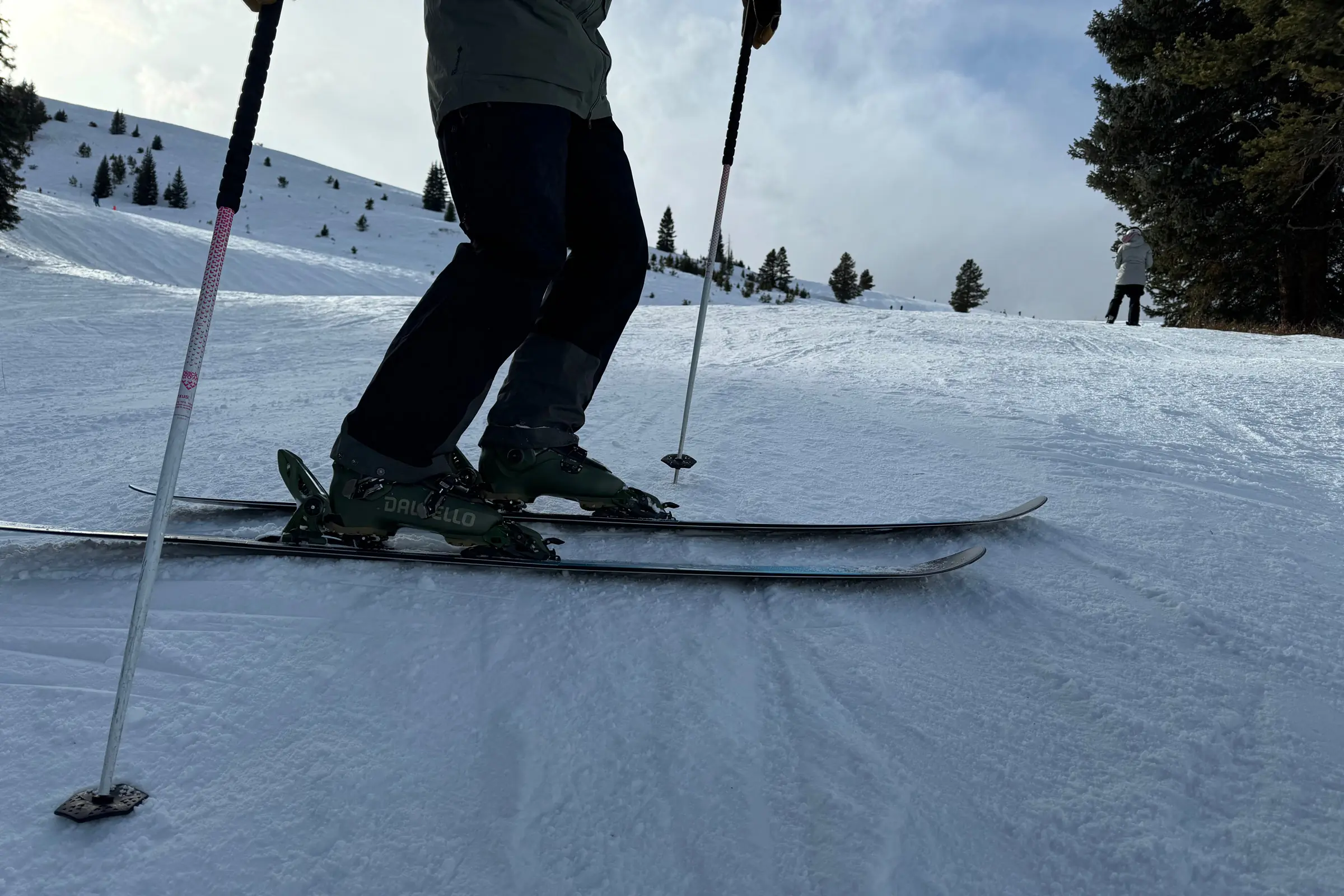



Footbed
The boots come stock with a decent wool footbed, but I replaced them anyway with Superfeet’s new Winter Support footbed. I also dropped in thin heel shims to mitigate slight heel lift, which I do in every boot. I haven’t found the need to mold the liners yet, even though I went for a performance fit.
There is a pronounced break-in period. But I’ve been happy with how they’ve been working with my feet. The 99mm lasts are adequately accommodating — neither roomy nor overly narrow. A boot that fits me in a more or less stock configuration is exceedingly rare because of my grotesquely high arches and hammertoes. Other high-arched skiers will be psyched, too.
Speaking of fit, Dalbello went with a full polyurethane cuff and shell. It’s the best boot material for dialing in fit according to the bootfitters they’ve been working with. It holds a punch and it’s easy to grind down, meaning these boots can be customized to nearly any foot.
Buckles & Dynalock
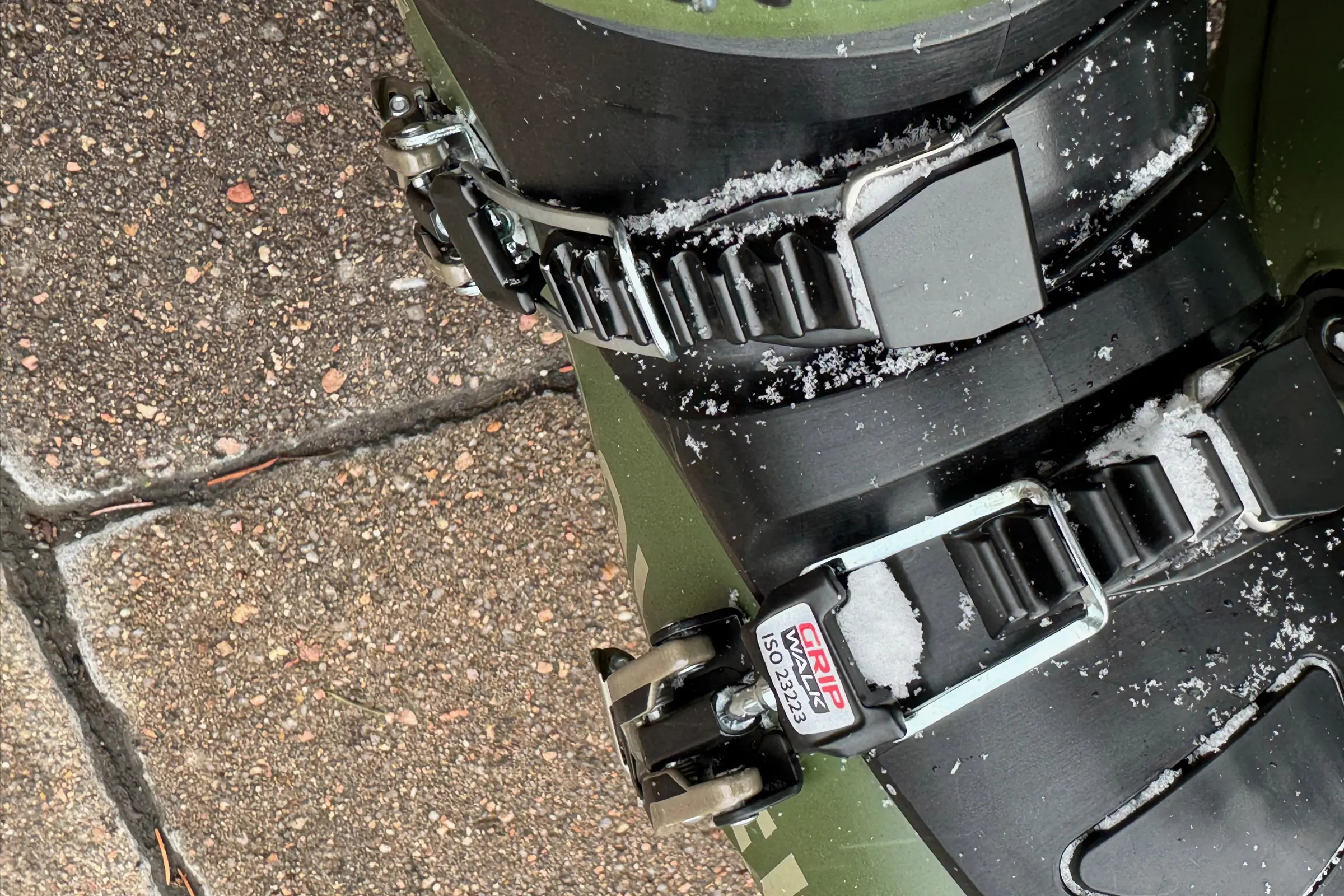



It took me a few days to figure out the instep buckle. The latch kept popping open when I’d lean into the boot on big G-out turns when the lower part of the boot would bulge. It seemed like a major design flaw. I couldn’t keep that buckle closed without it being super loose.
I eventually pulled one off on the slope to inspect it. That’s when I discovered what Dalbello calls the “Dynalock” buckle. Unlike the other two buckles on the boot, the tip of the instep buckle has a hinging latch that hooks to the corresponding buckle base attached to the boot’s shell. The clever system effectively stops the buckle from popping open even deep into the boot’s flex.
When it’s locked, the system works great. It’s difficult to buckle tight and lock simultaneously with one hand, though. While I got used to the system, I’d often use two hands — one to pull tension and the other one to articulate the pivot over the hook.
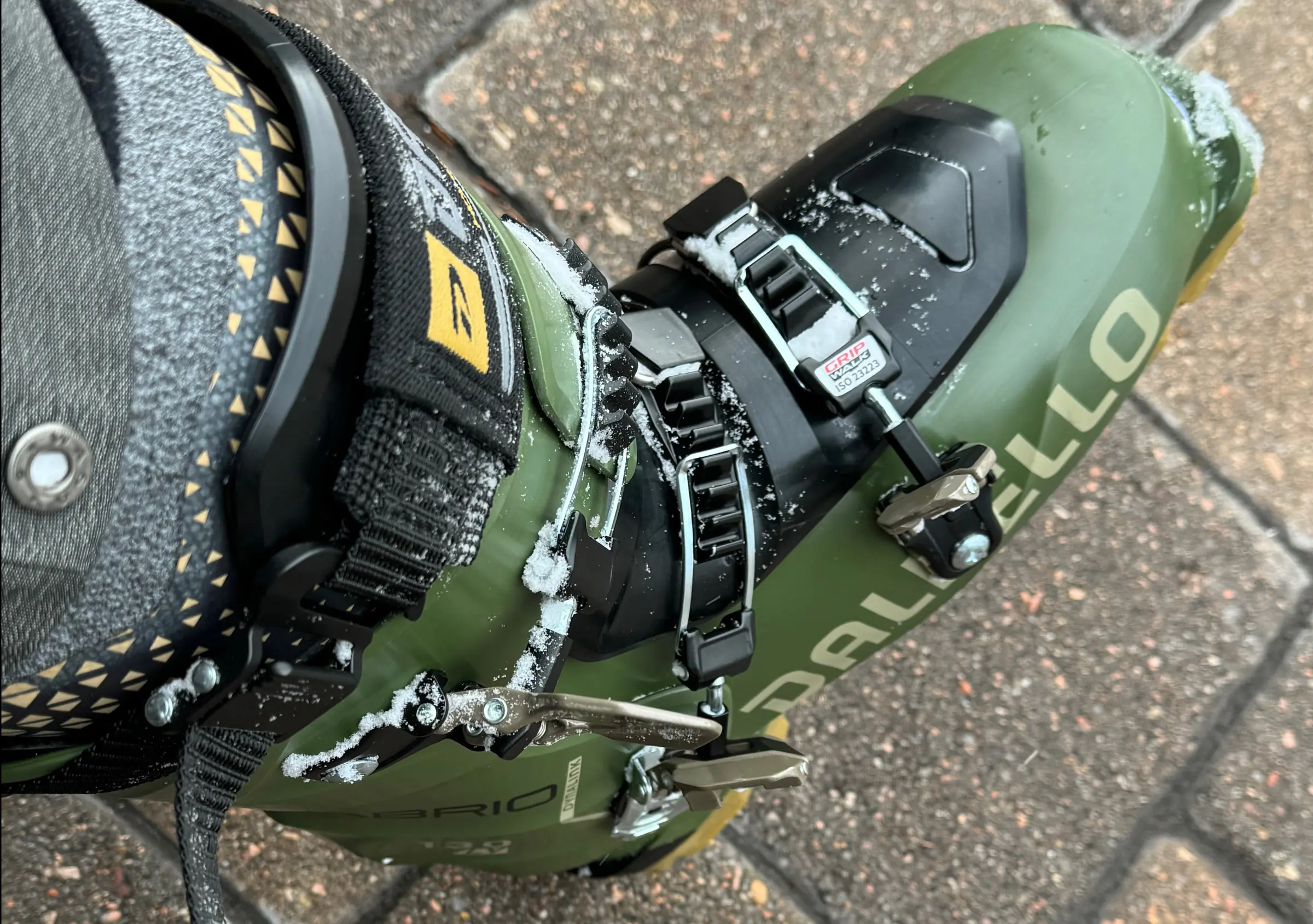



The other two buckles are fairly straightforward cable-bailed buckles that feature screw adjustment to shorten or lengthen the buckle shaft. I appreciated the micro-adjustability of each one. They tightened down to that locked-in feel I craved and didn’t need anything more.
Freeride boots have ditched Velcro top straps for cam-locking power straps now that Booster Strap’s patent has expired and I can’t get enough. The Cabrio’s power strap is stout and cinches down super well. It never slips when I lean deep into the boot. It’s also quick to release via a hook-and-loop closure that makes getting out of the boots a breeze.
Soles & Grip




The Cabrio 130s come stock with GripWalk soles (ISO 23223). What I didn’t expect were the extra alpine soles (ISO 5355) included in the box that are easy to swap out. Although most new bindings accommodate GripWalks, that’s a relatively recent phenomenon. But lots of people, including me, have skis they refuse to give up mounted with bindings that only accept Alpine Soles.
These soles aren’t designed to be swapped out over and over, though. It’s more of a set-it-and-forget-it system, even though they can be swapped out later. The manual says they shouldn’t be swapped more than five times. Fortunately, GripWalk Bindings are compatible with Alpine soles, so I’ll be running the Alpine sole configuration until my 2015 4FRNT KYE 110s with Marker Jesters finally retire.
Dalbello Cabrio LV 130: Conclusion
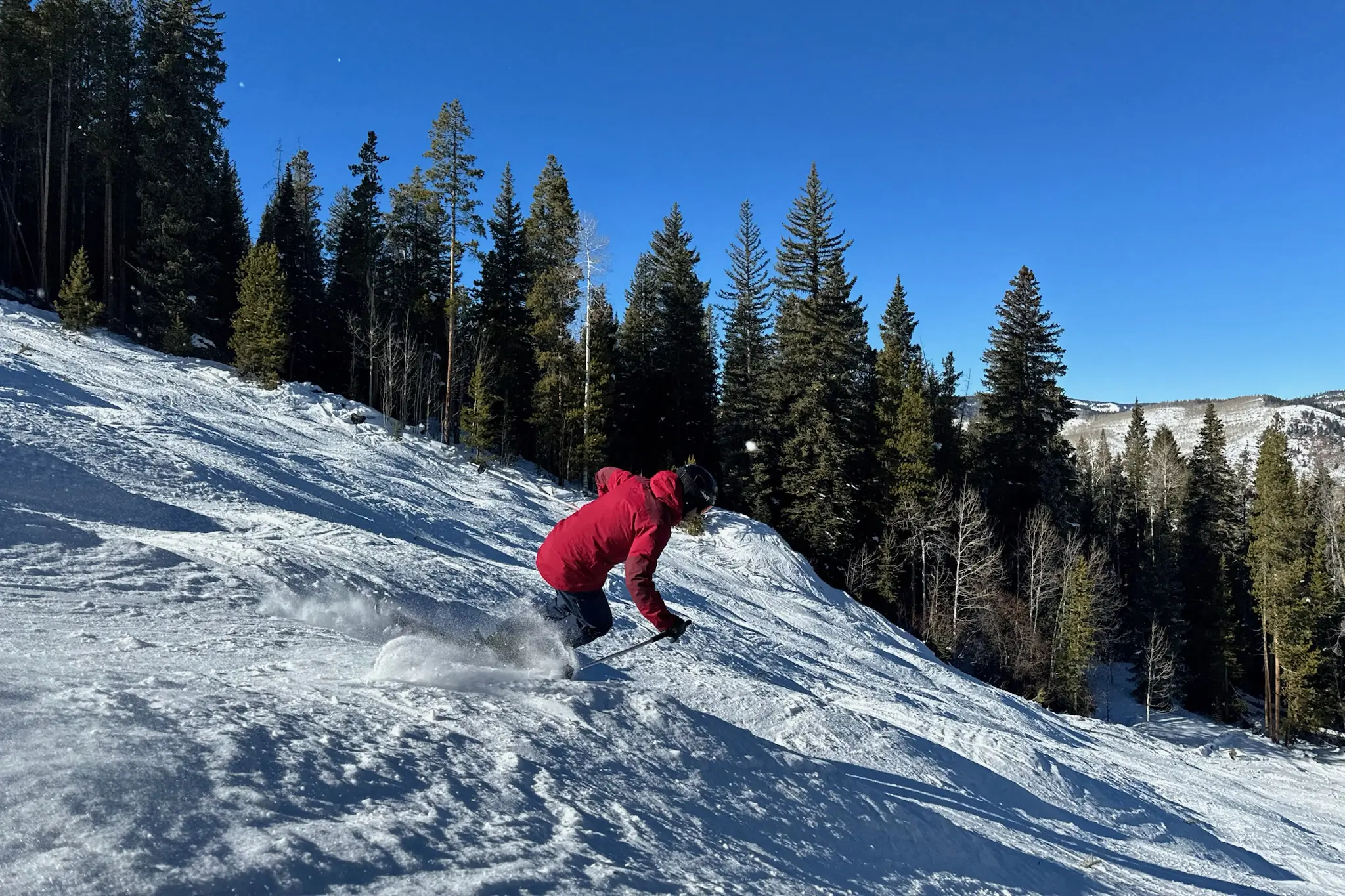



I’ve convinced myself that more skiers should be wearing Cabrio-style ski boots and a boot from the Cabrio LV line in particular. For one, they take a lot of pain out of skiing. They’re easy to get in and out of, and the flex characteristics and cushy liner did an incredible job of softening shin impacts.
More importantly, they ski smoothly through any snow conditions and terrain. They don’t have the immediate precision or strong progressive ramp-up of a stiff overlap boot, but their rebound, damping, and shock absorption are exceptional.
The Cabrio LV 130 provides an energetic ride that’s smooth as butter and just plain fun. Resort freeriders looking to charge, jump, jib, bounce, and slide will find an excellent match in this boot. So will intermediate to expert skiers looking for an alternative to traditional overlap boots that ski powerfully and comfortably.
